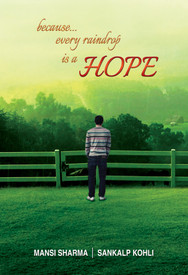
Manali situated at 6398 ft in the Himalayas is a popular honeymoon destination and Mecca for adventure sports enthusiasts. Indians flock to the town even in winters lured by its snow covered peaks and slopes. Foreigners attracted by adventure sports options flock in large numbers to Manali.
Renowned for its snow-covered mountains, scenic beauty, history and culture, Manali, often referred to as the "Valley of the Gods", is situated in Kullu district of Himachal Pradesh. It is often considered a twin town of Kullu, 40 km away.
Manali rose to prominence as a pit-stop on the flower trail in the sixties and seventies. Hippies flocked in pursuit of their utopian dream and popularised Manali in the west.
Manali rose to prominence with the rise of turmoil in Kashmir. The hill town witnesses a rush of tourists during the peak season in summer and again during Christmas and New Year. Tariffs for rooms can more than triple coinciding with the tourist rush.
Manali is also the main jumping-off point for Ladakh, Spiti and Lahaul. Daily buses ply regularly to Leh, Keylong and Kaza from June to October.
Adventure Sports: In addition to temples, mountain landscapes and culture, Manali is a paradise for lovers of adventure sports. Mountaineering Institute is located three kms from Manali town. The Institute organises basic and advance training courses, in trekking, mountaineering, skiing and water sports.
Angling tours are organised in Tirthan and Sainj rivers. Trout and Mahseer found in the rivers are an angler’s delight. Himachal Pradesh Fisheries Department organises angling tournament in April and in September-October.
Trekking: April to November is the best season for trekking in Manali. Lamadugh Meadows, Solang Valley, Koshla-Tree line are some of the popular treks. Most of the treks are one day journeys.
Manali has some of the finest stretches of white water. Though dangerous, hi-quality rafts and experienced and trained crew make the sport safe.
Paragliding in Manali is an unforgettable experience. Rohtang Pass, 51 km north and Solang valley, 13 km offer great opportunities for paragliding. Solang Nallah is suitable for short flights while Hallan is suitable for high flying. Operators also offer short tandem rides for novices.
Rock climbing, rappelling, Skiing, Ice Climbing, Snowboarding, Ski Touring are some of the adventure activities which can be indulged in Manali.
Tips
- Many tourists are also lured here by the famous Manali charas. Local police keeps a strict vigil which has brought the number of incidents.
- Old Manali and Vashisht close for winter from October to May.
History
Manali is named after the Hindu lawgiver Manu. Manali exactly means "the abode of Manu". Legend has it that sage Manu stepped off his ark in Manali to recreate human life after a great flood had deluged the world.Rakshas, the nomadic hunter tribe and shepherds from Kangra Valley are believed to be the earliest inhabitants of Manali. One of the most popular inhabitants of the city was the ‘nar’. Manali was part of the erstwhile princely state of Mandi which merged with India in 1948.
Lord Raghunathji, a form of Lord Ram, was believed to be the ruler of Manali and the erstwhile princely rulers ruled the kingdom in trust for Raghunathji. How Raghunathji came to be ruler of Manali has an interesting legend associated with it.
Raja Jagat Singh, who ruled the valley in 17th century, contracted leprosy after he was cursed by a peasant. The remorseful king was advised to install an idol of Lord Raghunathji. As advised, the king brought an idol from Ayodhya and was cured of the disease. Jagat Singh installed Raghunathji on his throne and the Lord became the ruler of Manali.
However, modern Manali history began with the advent of the British. The British developed the land as a sanctuary from the oppressive heat of the plains during summer. They planted apple and released trouts in the rivers of Manali.
Manali was part of the princely state of Mandi, which merged with India in 1948.
Culture
Fairs and festivals are a vital part of life in Manali. Dassehra is celebrated in a grand way. Other festivals which are celebrated on a grand scale are Basant Panchami, Hadimba Devi fair and Winter Carnival.Roerich Art Gallery houses paintings by Russian artist Nicholas Roerich. The gallery has also preserved original creations of the Himalayas done by Roerich.
Shopping
The region is known for its handicrafts and handlooms. Wood has traditionally remained a favorite item for handicrafts. Popular items for shopping in Manali are embroidered woolen shawls, Tibetan handicrafts, antiques, souvenirs and inlaid silver jewelry. The Mall Road is the best place for shopping in Manali. Fruit products, honey and apricot oil produced locally can also be purchased in the valley.Where to stay
The Mall is lined with hotels and restaurants. Manali offers wide range in accommodation which includes luxury resorts, river-side cottages, deluxe hotels and 3-star budget properties. Manali also offers home stays which are a good option to enjoy nature and culture of the locals.Read more






































